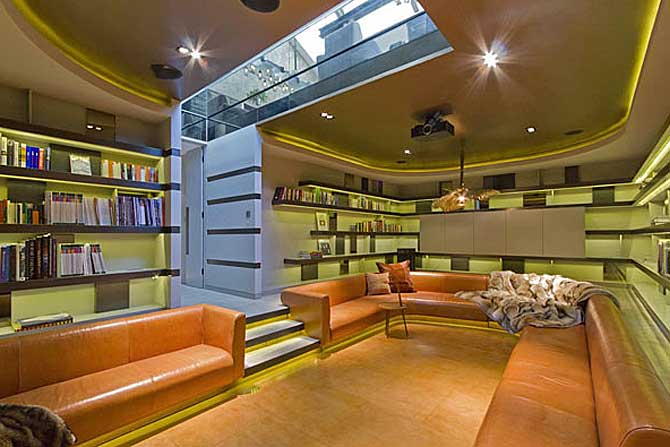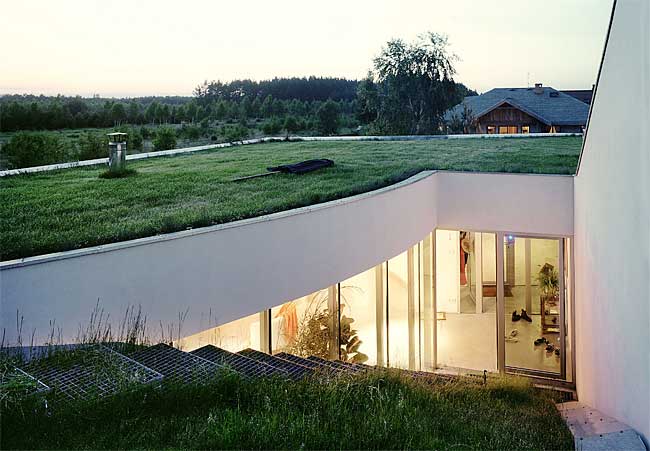Lighting
Underground Homes
If you've never been inside an underground house, you
may still have an image in your mind of a dark and dreary
place that would make you feel like you were living in
a cave. In actuality, that couldn't be farther from the
truth.
 Lighting for an underground home
is important
Lighting for an underground home
is important |
|
Many earth-sheltered homes use passive solar for at least
some of their energy needs, and the glass area used is
often on the south wall of the house.
Homeowners use light wells, which add extra light to
the houses' interiors, and the surfaces inside have been
specifically designed to reflect the natural and artificial
light sources well into the habitat. Light wells often
have open sides and a roof, to admit indirect light in
the summer months.
Some earth homes also have dome lights and glass facades,
which will allow their rooms to be bright and full of
pleasing light. For secondary rooms like bathrooms, you
can use simple dome lights.
Drawing Light ...
Underground homes can often achieve zero heating bills,
and the structures' solidity can lead to an environment
that is quite tranquil. That doesn't mean the interior
is dark. The homes often boast glass frontage that faces
in a southerly direction, which actually draws in light
no matter what the season.
Depending upon location and positioning of the dwelling,
however, earth-sheltered homes can suffer from a lack
of the most beneficial light, which is natural light,
since there is often not a lot of space available for
windows. Skylights can be used in some designs, and it's
important to allow space for them, if you don't get a
lot of light through windows. Skylights with mirrors can
also be used to reflect scenery surrounding the house.

Urban Underground House and Skylilght
Highlights of Skylights ...
In addition to providing light to underground homes, skylights
are an excellent way to generate good air flow. They may
lose some heat in colder months, though, and radiate more
heat than you would like in warmer months. The best skylights
available today often can eliminate older problems like
leaks and heat gains or losses. Some of the better skylights
even feature interior blinds for increased privacy.
When you plan your skylights and have them installed,
be sure that they are fully secured from the inside of
your house, so that they won't be tempting to intruders.
They are important enough that they should be included
in most designs, for lighting and ventilation. Skylights
are not as easily included if you use a precast form for
your roof. If you're adding skylights to a dome, be sure
not to affect the structural integrity of the dome, and
seal well to prevent any leaking.

Windows are best included in underground homes if they face
in a southerly direction. This gives you a good opportunity
for passive solar heating on winter days. If the building
codes in your area require the standard of 10-percent windows
in all rooms, you may have to file for a variance, since
this percentage is not always attainable in underground
homes.
When you locate windows in your design plan, have them
as high on each wall as you can. This will allow the light
penetration to deepen. Make sure that your windows are
not so high, though, that they lose their ability to draw
in the sun's rays for solar heating, during the colder
months when this is necessary.
If you have any
other bright ideas about this subject, send them in (Okay,
I'm a dimwit for saying that).

Written by Kevin Knatloa
First Published on November 05, 2012
Updated November 22, 2013
|